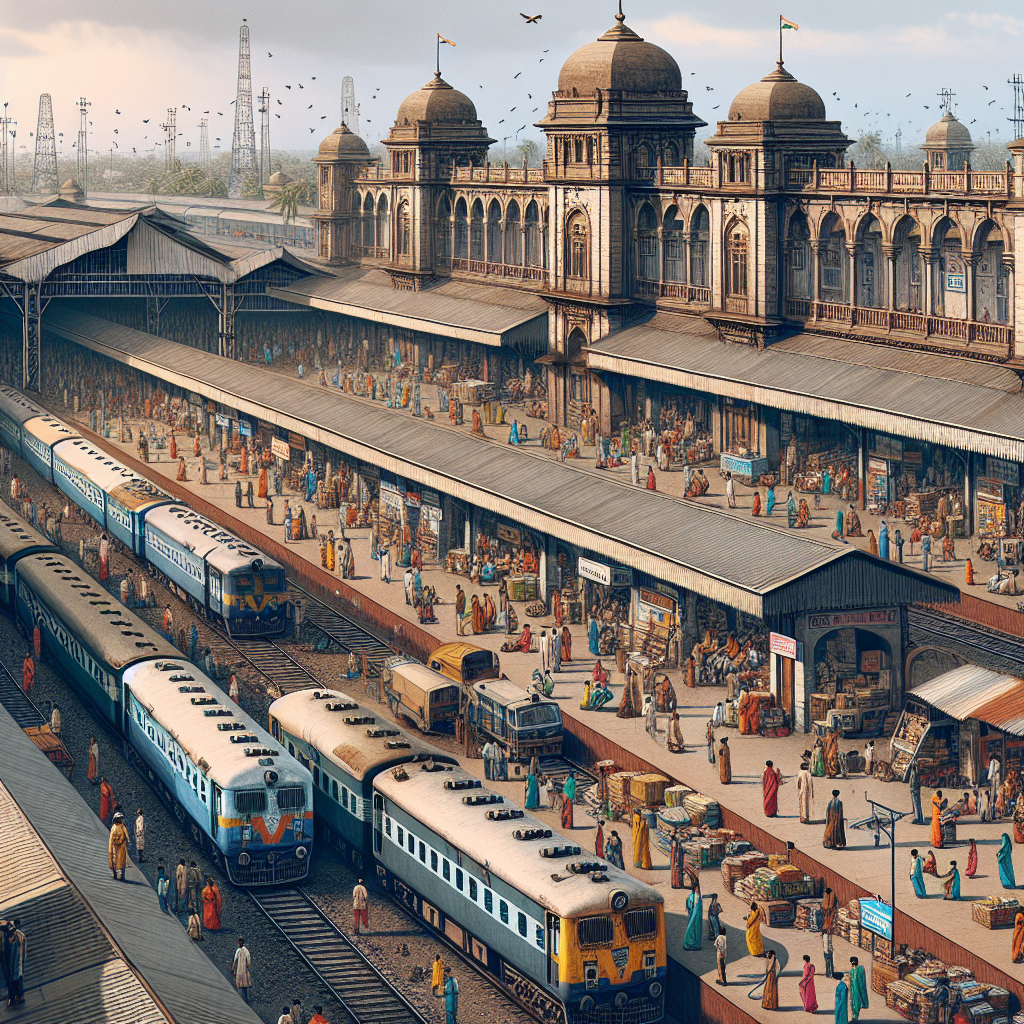Cabinet Approves ₹11,169 Cr Railway Projects to Boost Mobility and Connectivity
All four projects have been conceptualized under the PM Gati Shakti framework, which emphasizes integrated planning and coordination between ministries and stakeholders to optimize infrastructure delivery.

- Country:
- India
In a major infrastructure boost to rail connectivity across six states, the Cabinet Committee on Economic Affairs (CCEA) chaired by Prime Minister Shri Narendra Modi, has approved four key multi-tracking railway projects under the Ministry of Railways. The total investment for these projects stands at ₹11,169 crore, covering critical freight and passenger routes in Maharashtra, Madhya Pradesh, West Bengal, Bihar, Odisha, and Jharkhand.
These infrastructure expansions are aligned with the PM Gati Shakti National Master Plan, focusing on multi-modal connectivity, logistics efficiency, and comprehensive regional development. The projects will not only strengthen India’s transport backbone but also play a vital role in economic decentralization, job creation, and environmental sustainability.
Overview of the Approved Projects
The four sanctioned railway projects are:
-
Itarsi – Nagpur (4th Line): A vital trunk route on the Central Railway, essential for connecting northern and southern India via the Nagpur division.
-
Aurangabad (Chhatrapati Sambhajinagar) – Parbhani (Doubling): Boosts east-west connectivity in Maharashtra and reduces congestion between two rapidly developing urban centers.
-
Aluabari Road – New Jalpaiguri (3rd and 4th Line): Strengthens connectivity in North Bengal, vital for movement of goods and passengers to Northeast India.
-
Dangoaposi – Jaroli (3rd and 4th Line): Facilitates bulk commodity movement in mineral-rich belts of Jharkhand and Odisha, supporting steel and mining industries.
Strategic Benefits and Reach
-
Network Expansion: The projects will expand the Indian Railways network by approximately 574 kilometers, significantly improving line capacity and decongesting existing routes.
-
Geographic Coverage: These projects cover 13 districts across 6 states, impacting over 2,309 villages with a combined population of 43.6 lakh people.
-
Freight Capacity: The capacity augmentation is expected to facilitate an additional 95.91 Million Tonnes Per Annum (MTPA) of freight, particularly in bulk commodities such as:
-
Coal
-
Cement and clinker
-
Fly ash and gypsum
-
Petroleum and agricultural products
-
Containers and industrial goods
-
-
Passenger Service Improvement: Multi-tracking will reduce delays and increase the reliability and frequency of both long-distance and local passenger trains, improving service quality.
Environmental and Economic Impact
-
Energy Efficiency and Sustainability: The railways, being a low-carbon and energy-efficient mode, will reduce:
-
CO₂ emissions by 515 crore kg (equivalent to planting 20 crore trees)
-
Diesel consumption by 16 crore litres, lowering India’s dependence on oil imports.
-
-
Climate Goal Alignment: The projects support India’s commitments under international climate protocols and sustainable development goals by reducing the logistics sector’s carbon footprint.
-
Logistics Cost Reduction: Enhanced rail capacity and faster cargo movement will reduce India’s overall logistics cost, which currently hovers around 13–14% of GDP—higher than global benchmarks.
A Step Toward “Aatmanirbhar Bharat”
The projects are expected to generate direct and indirect employment, encourage entrepreneurial activity in affected regions, and strengthen India’s Make-in-India and Aatmanirbhar Bharat missions. With seamless connectivity, rural and semi-urban regions can better integrate with national supply chains, improving accessibility to markets and services.
“These projects reflect our government’s commitment to building a modern and efficient railway system that benefits both people and industries, while also being mindful of the environment,” said an official statement from the CCEA.
Execution under PM Gati Shakti
All four projects have been conceptualized under the PM Gati Shakti framework, which emphasizes integrated planning and coordination between ministries and stakeholders to optimize infrastructure delivery. The Gati Shakti approach ensures that railway upgrades align with national highway corridors, ports, inland waterways, and logistics hubs, thereby fostering multi-modal connectivity.
The Cabinet’s approval of these transformative railway projects marks a significant milestone in India’s journey towards infrastructure-led economic growth, especially in under-served and resource-rich regions. With enhanced line capacity, improved service reliability, environmental benefits, and job creation, the investments promise a multi-layered impact on India's economic and social landscape.










